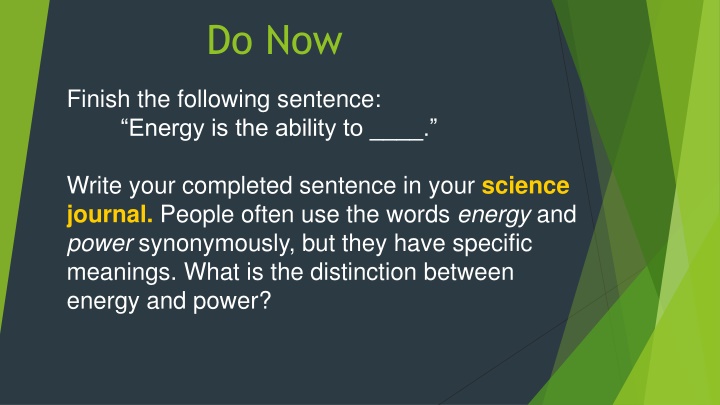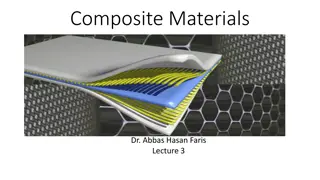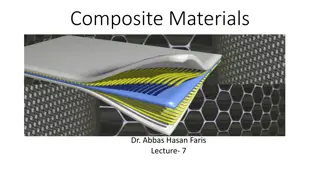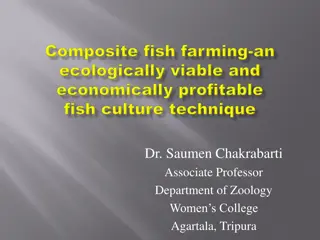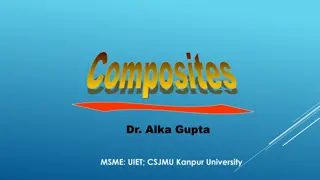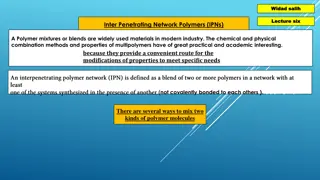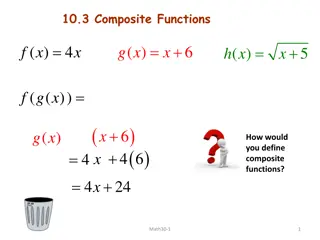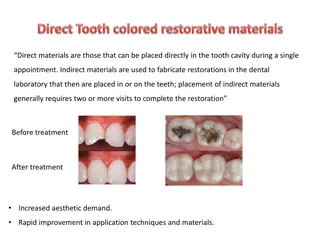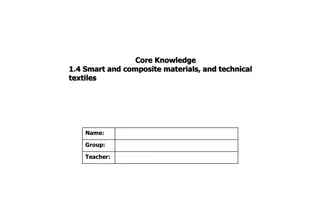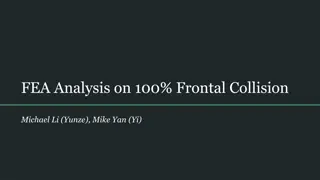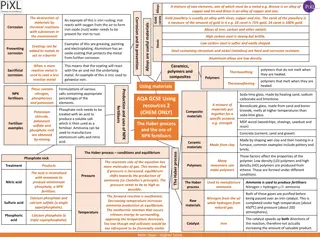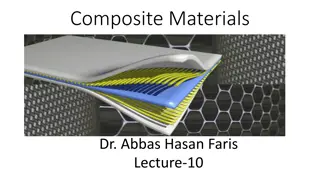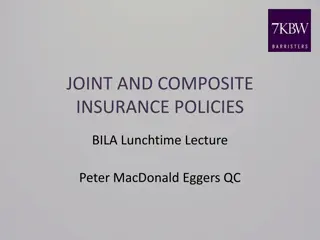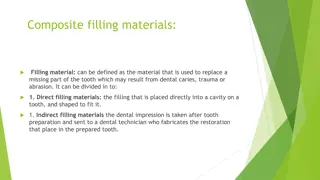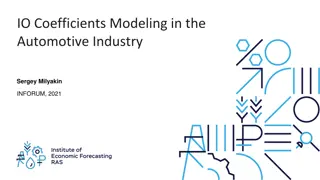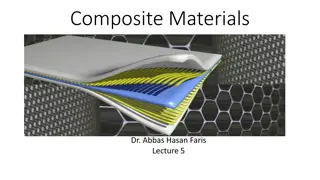Composite Materials in Civil Structures - Engineering Studies Recap
In Civil Engineering, composite materials like timber, concrete, pre-stressed concrete, and asphalt play a crucial role. Timber is known for its strength and eco-friendly nature, while concrete offers high compressive strength. Pre-stressed concrete involves placing steel reinforcing under tension before or after curing. Asphalt provides stability, durability, and impermeability. Understanding these materials is essential for designing and constructing robust civil structures.
Download Presentation

Please find below an Image/Link to download the presentation.
The content on the website is provided AS IS for your information and personal use only. It may not be sold, licensed, or shared on other websites without obtaining consent from the author.If you encounter any issues during the download, it is possible that the publisher has removed the file from their server.
You are allowed to download the files provided on this website for personal or commercial use, subject to the condition that they are used lawfully. All files are the property of their respective owners.
The content on the website is provided AS IS for your information and personal use only. It may not be sold, licensed, or shared on other websites without obtaining consent from the author.
E N D
Presentation Transcript
Do Now Finish the following sentence: Energy is the ability to ____. Write your completed sentence in your science journal. People often use the words energy and power synonymously, but they have specific meanings. What is the distinction between energy and power?
Objectives Explain the relationship between energy and work. Compare kinetic energy and potential energy. Describe the different forms of energy.
Agenda Today we will: Learn about energy by teacher led discussion. Work in groups to complete an energy activity Exit ticket quiz.
Vocabulary energy kinetic energy potential energy mechanical energy thermal energy chemical energy electrical energy sound energy light energy nuclear energy
Energy and Work: Working Together Energy is the ability to do work. Work is done when a force causes an object to move in the direction of the force. Work is a transfer of energy. Energy and work are expressed in units of joules (J).
Kinetic Energy Kinetic energy is the energy of motion. All moving objects have kinetic energy. Kinetic Energy Depends on Mass and Speed If you know an object s mass (m) and its speed (v), you can calculate the object s kinetic energy
Potential Energy Potential energy is the energy an object has because of its position. Gravitational Potential Energy The amount of gravitational potential energy that an object has depends on its weight and its height.
Mechanical Energy Mechanical energy is the total energy of motion and position of an object. Both kinetic energy and potential energy are kinds of mechanical energy. The mechanical energy of an object remains the same unless it transfers some energy to another object. But even if the mechanical energy of an object stays the same, the potential energy or kinetic energy can increase or decrease.
Thermal energy Thermal Energy is all of the kinetic energy due to random motion of the particles that make up an object. All matter is made up of particles that are always in random motion. So, all matter has thermal energy. Thermal energy increases as temperature increases and increases as the number of particles increases.
Electrical and Sound Energy Electrical Energy is the energy of moving electrons. Electrical energy can be thought of as potential energy that is used when you plug in an electrical appliance and use it. Sound Energy is caused by an object s vibrations. The object s vibrations transmit some kinetic energy to the air particles, which also vibrate. These vibrations transmit sound energy.
Light Energy and Nuclear Energy Light Energy is produced by the vibrations of electrically charged particles. Nuclear Energy is energy that comes from changes in the nucleus of an atom. Nuclear energy can be produced when nuclei are joined in a fusion reaction or when a nucleus is split apart in a fission reaction.
Chemical energy: energy stored in plants and animals. Chemicals used to make other forms of energy.
